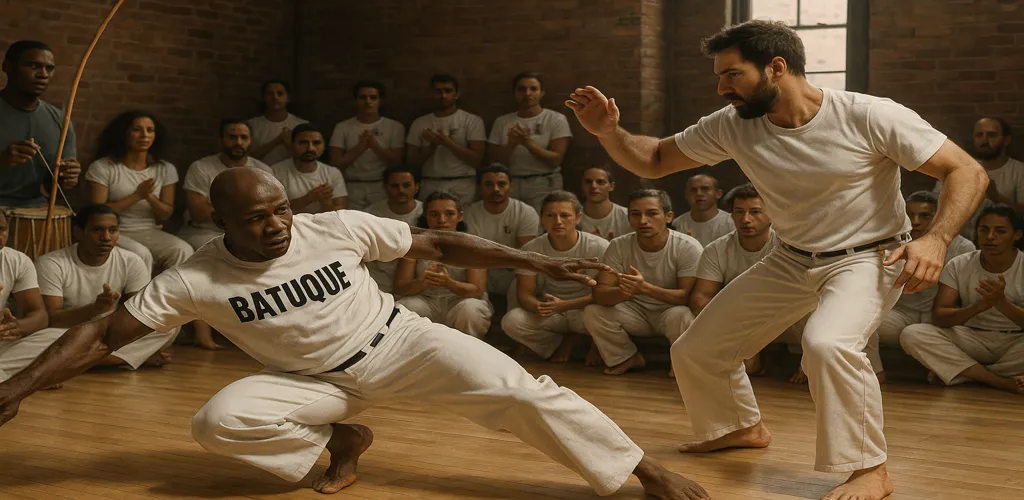Batuque

Batuque is an Afro-Brazilian combat game rooted in the cultural traditions of enslaved Africans in Brazil, particularly in Rio de Janeiro and Bahia. Originally a popular pastime among Black communities, it combines rhythm, circular motion, and sweeping leg attacks in a dynamic and expressive way. Unlike capoeira, Batuque is less ritualized and more directly confrontational, often practiced with minimal musical accompaniment. Though nearly extinct by the mid-20th century, it has been revived by mestres and scholars committed to preserving Afro-Brazilian heritage. Batuque today is studied both as a martial art and a cultural artifact.
Batuque Essentials
About Batuque
This section introduces Batuque as a unique Afro-Brazilian fighting game known for leg sweeps, fluid motion, and historical significance. It explains the game’s basic structure and its cultural importance.
Batuque History
Explore Batuque’s evolution from a 19th-century street game to a nearly lost tradition, and its modern revival. This section uncovers historical contexts, repression, and its links to capoeira.
Philosophy & Approach
Batuque is rooted in community expression, strategic movement, and rhythm-driven timing. Learn how this playful yet combative art values timing, balance, and unpredictability.
Techniques & Style
Dive into Batuque’s defining moves, such as rasteiras (leg sweeps), body positioning, and unorthodox footwork. This section focuses on how fighters off-balance and unseat each other with finesse.
Traditions & Etiquette
Batuque respects communal roots and playful combat spirit. This section outlines common gestures, game structure, and the informal etiquette that governs its roda-like gatherings.
Uniform & Symbols
Batuque is traditionally practiced in simple clothing, often barefoot and without formal uniforms. Learn about the minimalist attire and the cultural symbols sometimes revived in modern practice.
Weapons
As an unarmed art, Batuque focuses entirely on body mechanics and timing. This section clarifies its purely physical nature, in contrast to other Afro-Brazilian arts involving blades or sticks.
Ranking System
Batuque lacks a formal ranking system; respect is earned through skill, experience, and community contribution. This section explains how hierarchy emerges organically.
Batuque Glossary
A glossary of Batuque-specific terms and historical references—from classic sweeps to Afro-Brazilian expressions—providing essential vocabulary for practitioners and researchers.
Notable Figures
Meet key figures in Batuque’s revival and preservation, such as Mestre Bimba (who incorporated Batuque into capoeira) and other contemporary researchers and players.
Branches & Organizations
Explore the small but dedicated network of Batuque groups, cultural institutions, and preservation projects. This section maps where and how Batuque is kept alive today.
Competitive Format
While not formally competitive, Batuque involves tactical challenges in playful sparring. This section describes the format of friendly duels, judged by skillful execution and rhythm.

